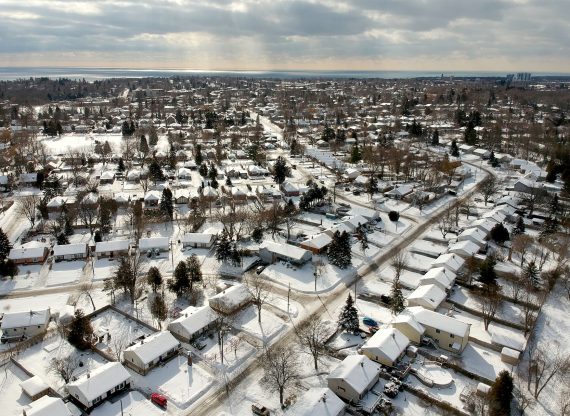Blaming foreigners will not resolve the housing shortage

It’s always easier to blame someone else than to recognize one’s own mistakes.
In order to stem the rapid rise in housing prices, the federal government has banned foreign investors from buying homes in Canada. In the case of permanent residents — who already live here, after all — they will need to stay a minimum of two years before becoming property owners.
According to the federal housing minister, Ahmed Hussen, banning foreigners from buying property here will help “all residents of this country have a home that is affordable and that meets their needs.”
What the minister is trying to do is attack demand in order to reduce the pressure on the market. The measure may well be counterproductive, however.
In British Columbia, for example, long the poster child for the housing shortage, homes held exclusively by foreign owners account for just three per cent of the housing stock (4.1 per cent in metro Vancouver), or 53,000 addresses. This might sound like a lot, but it’s not much compared to the 570,000 missing housing units in the province, according to the federal government’s estimates.
Instead of laying the blame on foreign buyers for unaffordable housing, we should be talking about the source of the problem: the many obstacles put in place by provinces, and especially cities, which stand in the way of increasing the supply of housing
It’s no secret that our cities are particularly attractive. The metropolitan region of Montreal, for example, is home to 715,500 more Quebecers than it was 20 years ago. This is due as much to births as to immigration and a general urbanization trend. The same trend can be observed in Quebec City, in Toronto, in Vancouver, and in the country’s other big cities.
In so far as the growth of supply can follow demand, population growth should not lead to affordability problems. Alberta, for example, has seen its population grow by nearly 50 per cent over the same period, but its cities have managed to keep their housing markets within the CMHC’s affordability range.
Unfortunately, in many other Canadian cities, including large Quebec cities, supply has not tracked demand, due to the difficulty of building new units in many places.
This is just what economists observe when they look at the question of housing prices. Places where it is easier to build new units to meet demand are the ones where price increases are the most modest, or even non-existent when expressed as a percentage of citizens’ average income.
We need to look at institutional barriers — those notorious stumbling blocks that governments more or less intentionally strew across the paths of developers. Just think of provincial land-use regulations, municipalities’ strict zoning rules, or the panoply of bureaucratic requirements that need to be satisfied before the first shovelful of earth can be moved.
Each regulation comes with its cost, either in the form of a tax or in the form of time and associated consultant fees, which complicates the construction process and reduces the supply of new housing.
This statistical relationship is well documented. The higher the regulatory index, the higher the price will be and the faster it will climb.
Nor is this regulatory cost insignificant. A C.D. Howe study showed that already in 2016, the excessive level of regulation in Ontario had the effect of increasing the average price of houses by over $100,000. That was six years ago. Both prices and regulations have had more time to grow since then.
Blaming foreigners will not resolve the housing shortage. Our governments have to recognize that they contribute to the current situation and see what they can do to improve things. In short, they have to stop looking for scapegoats, and remove the obstacles they’ve put in place that keep those who could solve the problem from doing so.
Vincent Geloso is Senior Economist at the MEI. The views reflected in this opinion piece are his own.

